For every serious athlete in any sport, getting a college scholarship and commitment is a dream come true. As athletes dedicate their high school careers to athletic excellence, it becomes their top priority, perhaps even above academics or social activities.
Many athletes have to sacrifice the chance of a normal high school life to achieve this dream, passing it off as part of the sport; however, very few of these students end up playing in college. According to statistics available on the National Collegiate Athletics Association website, of the estimated 8 million students who play high school sports, only about 480,000 of them continue playing in college.
At McCallum, so far this year, there are only two seniors officially committed to play sports in college: Julia Crofut and Lindsey Wiley.
McCallum’s athletic director Thomas Gammerdinger said there will be more.
“I know there will be a handful of others, but they just haven’t decided yet.”
Senior basketball standout Norman Boyd received several offers to play college basketball, but he opted not to accept them and will instead attend the University of Arkansas.
On March 20, Crofut signed her official commitment to play softball for Texas Lutheran University, a Division 3 school. Crofut signed her letter in a library ceremony while surrounded by her supporters in the McCallum community.
She was part of the relatively small number of students to make it to the next athletic level; according to the NCAA website, of the 480,000 students who make the cut to play college athletics, only 2 percent or one in 54 high school athletes play at Division 1, or D1, schools. For many student athletes, including Crofut, landing a D1 scholarship is the ultimate prize.
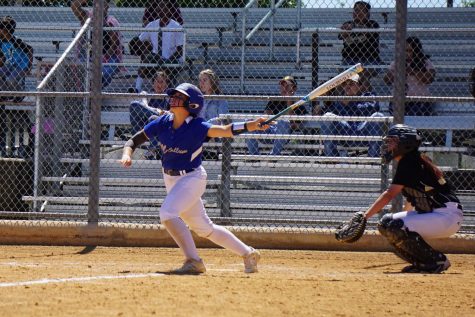
“I had started out with looking at D1 obviously,” she said. “I mean, go big if I wanted to.”
But with great athletics comes great complications. As Crofut realized, larger colleges with more competitive athletic programs are very selective in the scholarships they offer, and they are less likely to accommodate the needs of athletes who aren’t nationally ranked. These detractors cause many athletes to consider the still competitive but less intense nature of D3 sports programs. Crofut had a chance with a D1 college, but it did not work out.
“They were only willing to give me a couple thousand dollars,” Crofut said. “I needed a little more of a foundation, and [the D1 organization] was further away. Texas Lutheran was the closet and was offering me the most money. [TLU] was the best choice for my education.”
Crofut and Wiley have been playing their respective sports since they were very young and grew up with athletics in almost every aspect of their lives. Crofut began by playing baseball with the boys at Northwest because she was too young to play softball.
Though it started out as fun and games, like most serious athletes, the older Crofut got, the harder she trained and the more competitive she became. Wiley’s experience in youth athletics was similar to Crofut’s.
Both athletes reported that their commitment was tested on the college recruiting trail. Both girls laughed in relief when recalling their preparation for the recruiting process.
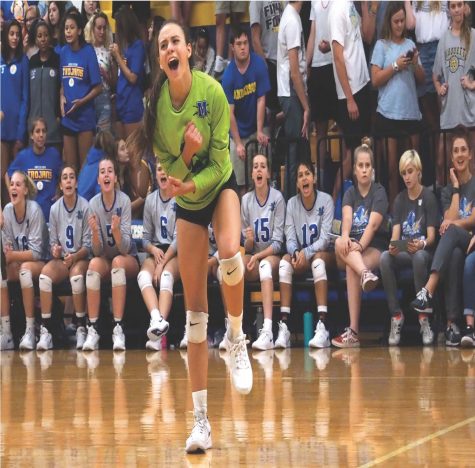
ALL IN AT ANDERSON Wiley celebrates taking a point in the Lady Knights’ 25-20, 25-21, 18-25, 14-25, 15-11 triumph at Anderson on Aug. 24. Because Wiley plays libero, a defensive specialist position, she wears a different colored jersey. Wiley signed her commitment letter to play college volleyball at Prairie View A&M on April 12. Photo by Gregory James.
“Oh God! What didn’t I do?” Crofut said. “I woke up at 5:30 in the morning, probably three days a week for workouts, then I’d go to school. Then, after school, I’d go to practice and a hitting lesson or something. Then, maybe a lesson with fielding after that.”
The recruitment process doesn’t just take a toll on the physical body, it is also equally tough on the mind. Wiley, who is committed to Prairie View A&M for volleyball, talked about the mental toll of the process.
“I took and sent out a lot of videos,” Wiley said. “Every game I played came with a video. Along with practice, I went to lots of camps where I talked to coaches, emailed them and got my name out there.”
Though the recruitment process is both physically and emotionally taxing on the athletes, both players said the payoff is worth the effort it took to earn it. Student athletes also maintain that they learned life lessons through their experiences in sports. Both Crofut and Wiley claim that it has helped shape them into the people that they are today. Crofut credits softball with helping her gain a larger sense of responsibility.
“[Being a student athlete] just kind of gave me a responsibility in knowing what I need from my body and knowing how my schedule is so uptight,” Crofut said. “I needed to time manage everything and be really good at it. I have always heard that in college you really need to have that, or you’re just going to drown, especially as a student athlete.”
Wiley agreed that working hard toward playing sports in college has shaped her character in positive ways.
“It’s made me really determined and hardworking in everything I do,” Wiley said.
Athletes gain many skills from their commitment to sports. However, it doesn’t mean the future will hand them no struggles. The jump from high school to college sports includes many changes.
Jaimie Duffek, the softball recruiter and a member of the National College Scouting Association, told The Chicago Tribune that it is very difficult for many athletes to make the transition to college sports because “everyone is talented.” The increased speed and ability of the opposing players makes it hard to thrive.
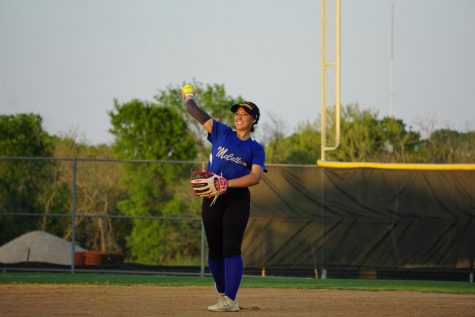
SUN’S OUT, YOU’RE OUT: Before the sun goes down during the Knights’ March 29 rematch against LBJ, Julia Crofut makes a throw while warming up before the game. In an instant classic between the arch-rival teams, the Knights and Jags went toe to toe for nine innings before the Jags prevailed, 10-9, on a walk-off ground ball with the bases loaded. Melany Reese hit a two-out, two-run single to make the score 9-4 Knights in the top of the sixth. Crofut had an RBI, a run scored and three walks in the game. Photo by Caleb Melville
Because of this heightened competition, Wiley views college athletics as a completely different world than the one she experienced in high school. After college, out of the 2 percent of high school athletes who are able to compete in D1 sports in college, only a very select few continue their sports career at either a professional or even an Olympic level.
While very few college athletes turn pro, many athletes, including Crofut and Wiley, plan to continue their love for sports through other occupations related to the sport they play or by playing the sport as an extracurricular. While 87 percent of college athletes graduate with a degree, the NCAA reports that psychologists say many also leave with the feeling that there’s a hole in their life after they stop playing the sport that has been such a big part of their life.
“I couldn’t see my life without it,” Wiley said, and most athletes feel the same, so the excitement of graduation is also combined with the fear of losing their sport. Many athletes find a way to keep sports in their life. Crofut and Wiley both plan to major in kinesiology, the study of the body. Wiley wants to then go to UT for a doctorate in physical therapy, while Crofut says, “Right now, I want to stick with being a coach.”
Becoming a college athlete at any level is no easy feat. Due to the stress and work required to achieve this dream, many student athletes are discouraged. To those people, McCallum’s commits have some advice.
“I would say don’t give up,” Crofut said. “I’ve had a lot of coaches talk about my physical shape, my mentality and how I wasn’t good enough. They’d say that I would never make it, and I’m sure that’s everyone. I would just say it’s a process and no matter who’s negative in your life, you need to figure out your goal. If you have figured that out, and it makes you happy, I’d just say don’t give up on it.”
Wiley echoes Crofut’s advice, but keeps it short and sweet: “Get your name out there,” Wiley said. “Know your skill level, and have a backup plan.”
Photo album: Mac 22, Lanier 6 (Senior Game) – April 19, 2019.
Photos by Caleb Melville.
Photo album: Lindsey Wiley signing – April 12, 2019.
Photos by Selena De Jesus.


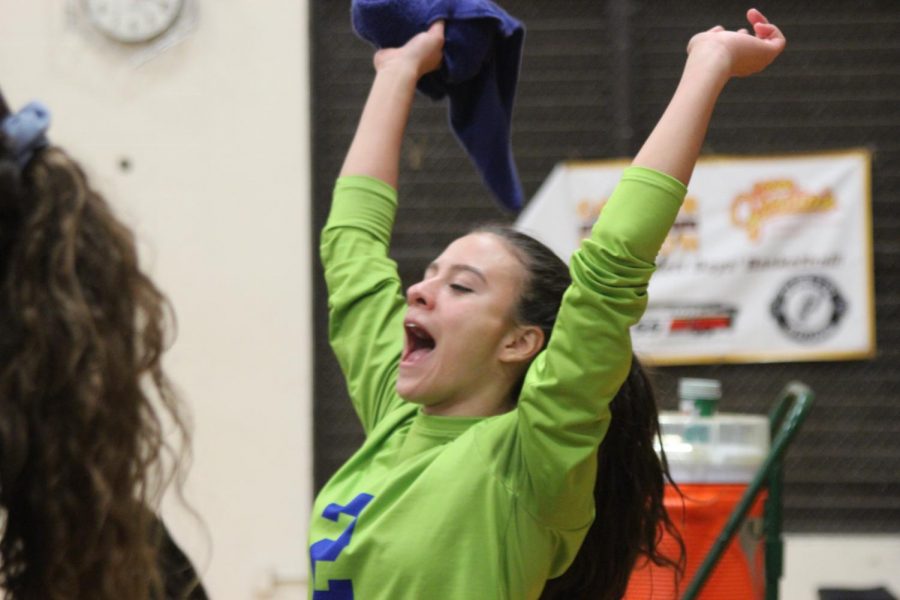
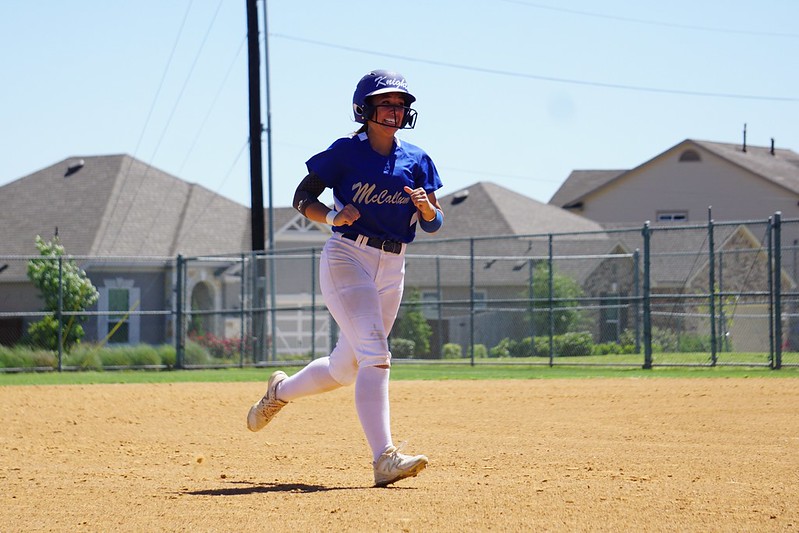
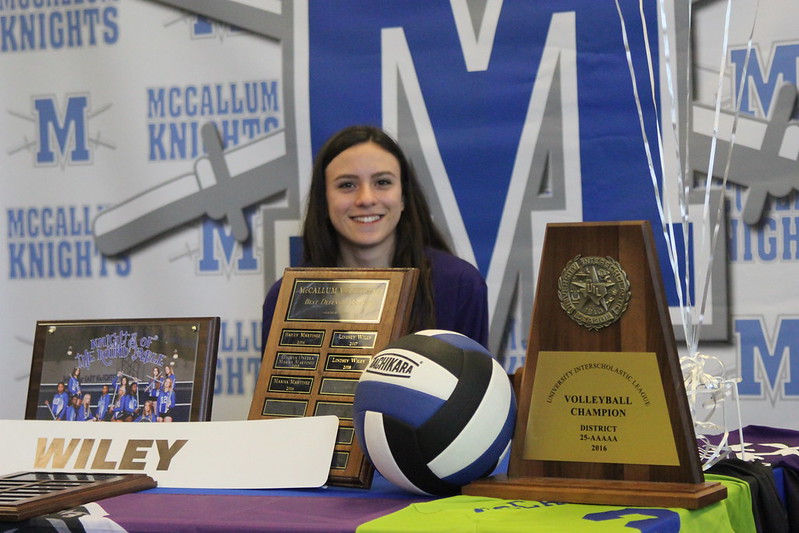
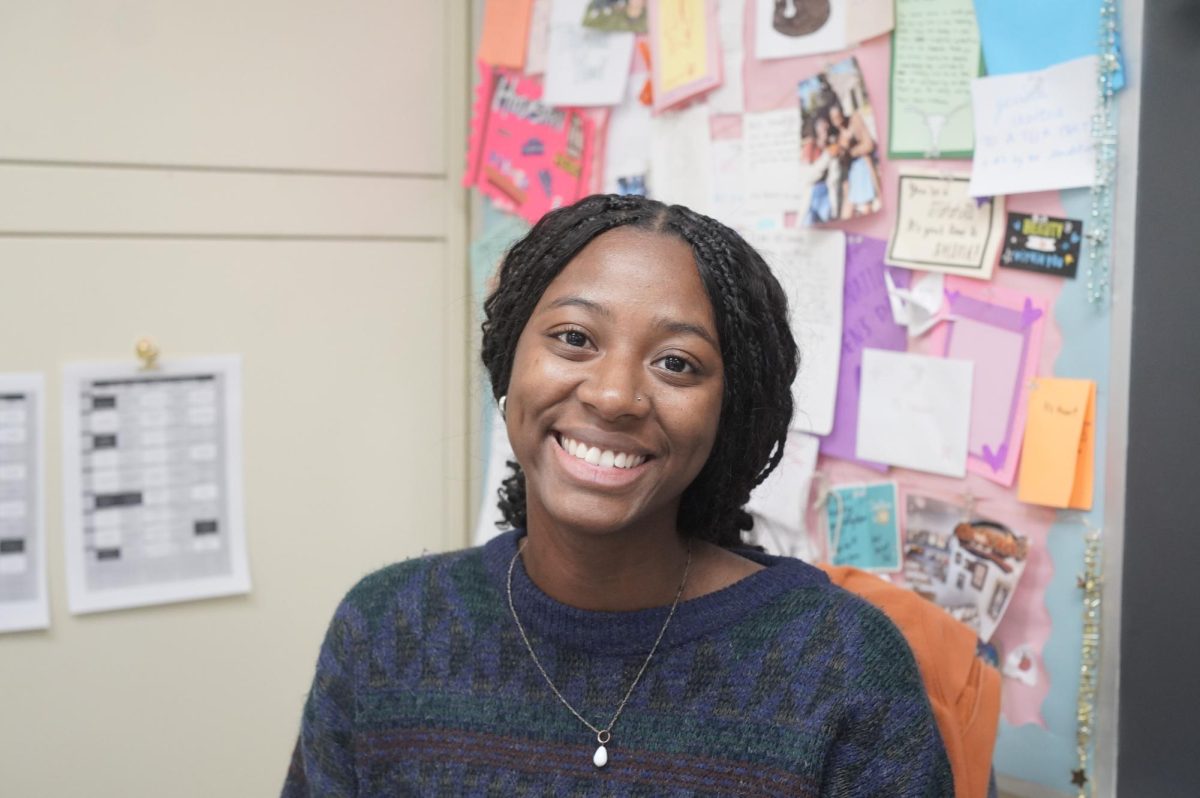

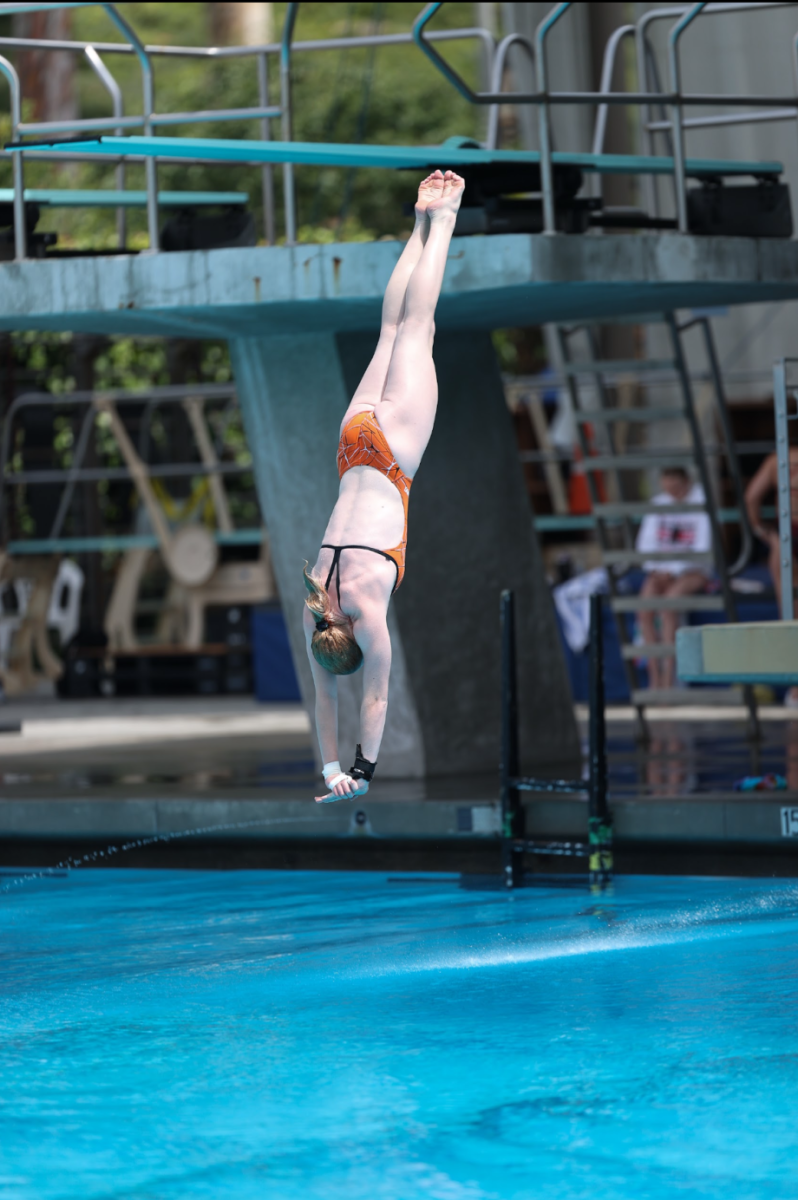


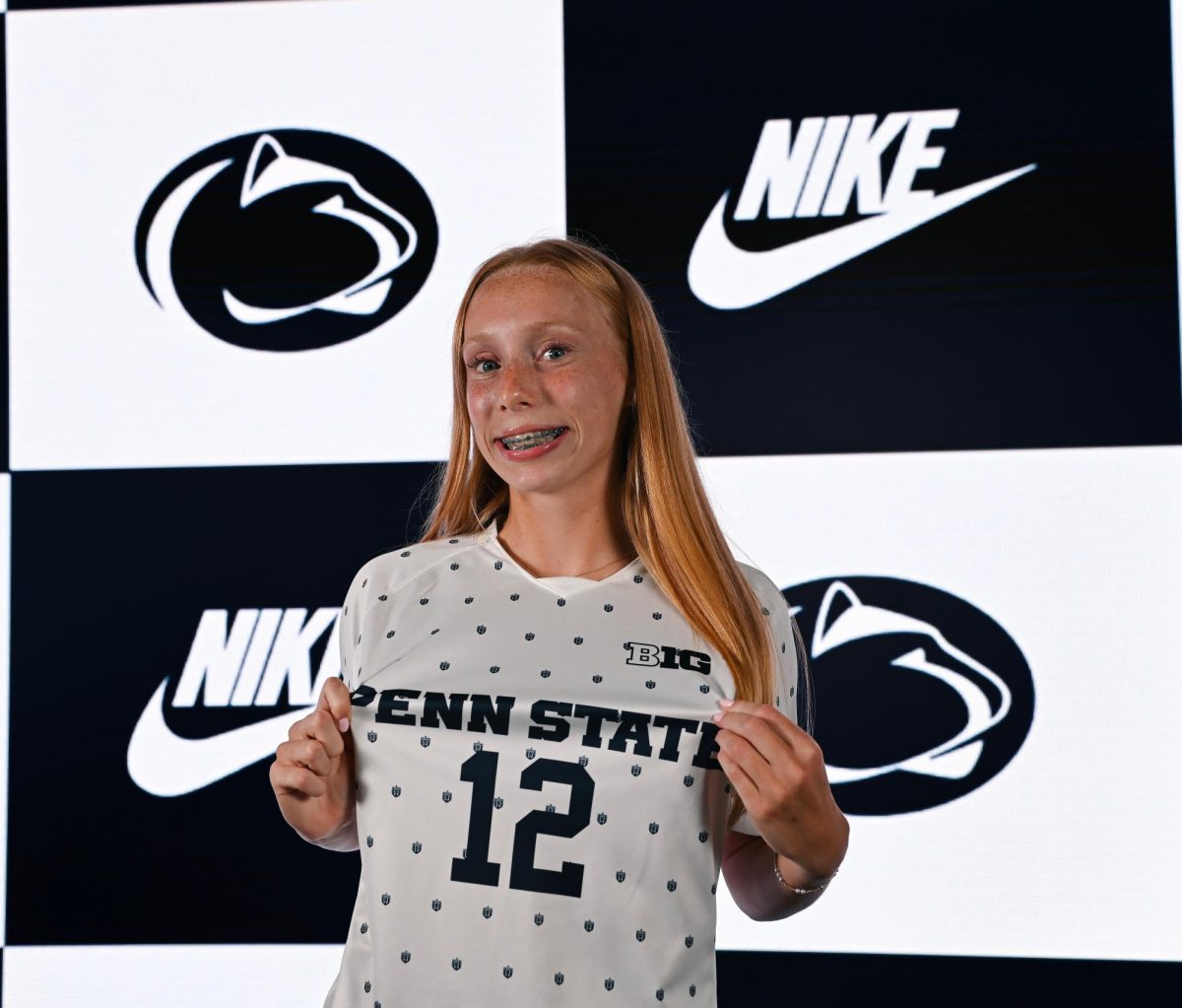
grace nugent • May 1, 2019 at 4:12 pm
I really like the story and how it depicts the effect the girls had on their team and their team mates.
Asly Nayely Mendez Ruiz • Apr 29, 2019 at 4:23 pm
Congratulations